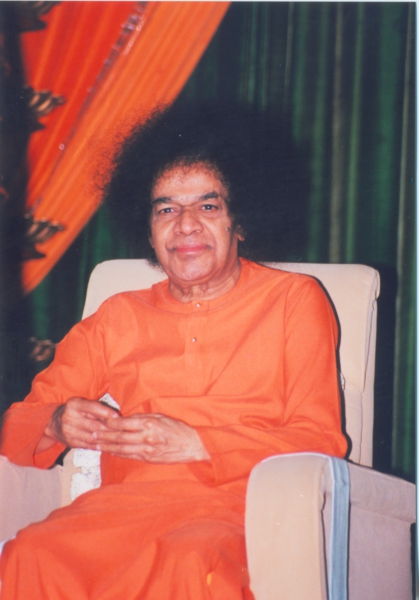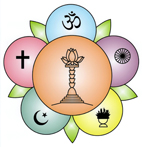
To grasp the full significance of all-pervasive Omkara, it is necessary to have self-control to bring the sensory organs under control. In reciting any mantra, the primacy to be accorded to Om should be recognised. In the mantras, Keshavaya namah, Govindaya namah, Narayanaya namah, the significance of ‘Namah’ which occurs at the end should be noted. The worshipful attitude signified by Namah (salutations) will be lost if Om is not used at the beginning of each mantra. It is only when ‘Om’ is said at the beginning and Namah at the end, that the full purport of the mantra will be brought out. The integral connection between Om and namah should be recognised! Namah represents Prakriti (objective world). Om connotes Purusha (Divinity). The purpose of the mantra is to reveal the connection between Prakrithi and Purusha! – Divine Discourse, Oct 01, 1984.
Gedanke für den Tag aus Prasanthi Nilayam vom 2. September 2022
Um die volle Bedeutung des alles durchdringenden Omkara zu erfassen, ist es notwendig, Selbstbeherrschung zu haben, um die Sinnesorgane unter Kontrolle zu bringen. Beim Rezitieren jedes Mantras sollte der Vorrang von Om anerkannt werden. Bei den Mantras Keshavaya namah, Govindaya namah, Narayanaya namah sollte die Bedeutung des „Namah“ am Ende beachtet werden. Die verehrungsvolle Haltung, die durch Namah (Grußformeln) ausgedrückt wird, geht verloren, wenn Om nicht am Anfang eines jeden Mantras verwendet wird. Nur wenn „Om“ am Anfang und „Namah“ am Ende gesagt wird, kommt der volle Sinn des Mantras zum Vorschein. Die integrale Verbindung zwischen Om und Namah sollte erkannt werden! Namah steht für Prakriti (objektive Welt). Om steht für Purusha (Göttlichkeit). Der Zweck des Mantras ist es, die Verbindung zwischen Prakrithi und Purusha zu enthüllen!
Sri Sathya Sai, 1. Oktober 1984
© Sri Sathya Sai Media Centre | Sri Sathya Sai Sadhana Trust – Publications Division
